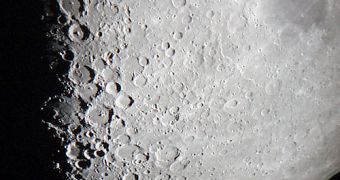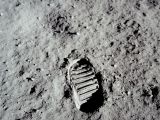Lunar dust is now probably one of the biggest issues considered in the event of a future manned mission to the surface of the Moon. It is a highly abrasive fine powder covering the whole surface of the Moon, it can easily get stuck to equipment and spacesuits and it can even get into tight spaces, such as joints, and interfere with their proper operation. But how harmful is it for astronauts?
In the late 1960s and the early 1970s, the Apollo missions to the Moon reported even having moon dust carried inside the lander, although precautions have been taken to prevent that. The quantities were so great that astronauts could actually smell it. National Space Biomedical Research Institute is currently investigating the effects of high exposure to lunar dust, especially in environments with decreased gravitational fields.
"In the big picture, the questions are: How much goes into the Lung? Where does it go? How long does it stay? And how nasty is the stuff?" said Dr. Kim Prisk, NSBRI Human Factor and Performance Team researcher. The Apollo missions lasted only a few days while future manned missions to the Moon could take as long as a few months to complete. And although lunar dust does not produce any illnesses, it is extremely toxic, having properties similar to the ones of fresh-fractured quartz.
Because the Moon has a gravitational field only one sixth of that of the Earth, dust particles can enter the respiratory system more easily. "In the Moon's fractional gravity, particles remain suspended in the airways rather than settling out, increasing the chances of distribution deep in the lung, with the possible consequence that the particles will remain there for a long period of time", says Prisk.
To monitor what happens to these particles during fractional gravity, the research is conducted on NASA's Microgravity Research Aircraft, popularly known as the 'Vomit Comet', where zero-gravity is simulated during steep descents.
"During the portion of the flight in which gravity is reduced to levels seen on the lunar surface, we inject particle into a mouthpiece through which the study participants breathe. Subjects breathe in and out, and we measure how the particles behave and how many end up inside the lung", Prisk explained.
"With the reduced-gravity flights, we're improving the process of assessing environmental exposure to inhaled particles. We've learned that tiny particles which are the most significant in terms of damage, are greatly affected by alterations in gravity", he said.
Depending on the risk exposure limit, scientists can then engineer equipment to limit the exposure of both humans and instruments. Additionally, the study will reveal how particle distribution occurs inside the lungs.
"If we learn how to target drugs to specific areas inside the lung, it will be possible to achieve optimal results with small quantities of drugs delivered to exactly the right place in the lung, and it will minimize side effects", Prisk said.

 14 DAY TRIAL //
14 DAY TRIAL // 
